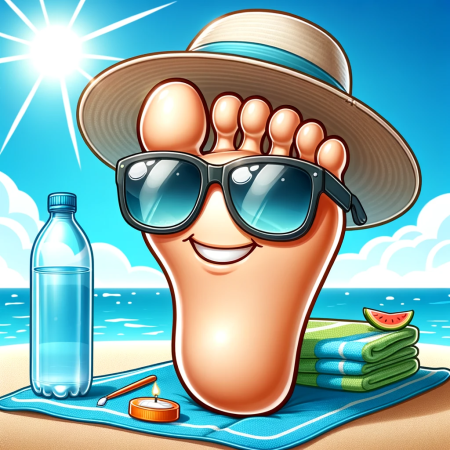

It’s important to make sure you wash and dry your feet, especially in between the toes. This is to prevent tinea, bacteria build up and other skin infections. You should wash your feet everyday, especially if your feet are particularly sweaty. Make sure you check in between your toes, especially if you’re a diabetic.
Gently reduce callus build up and keep your nails trimmed.-Use a foot File, 2-3 times/week, to gently remove the dead skin cells and smooth your skin. For best results, use in the shower or just after a shower, when your skin is more hydrated. Using a foot file will also allow your moisturising cream to soak in better.
When you cut your nails, make sure you follow the contour of your nail plate and do not cut down the sides. Filing your nails, instead of cutting them, can also be a good way, if you and it difficult to cut your own nails.
This helps to break down the hard skin and hydrate the healthy skin. We recommend using creams with at least 10-15% urea. For best results, apply your moisturiser when you get straight out the shower, to allow the cream to soak in.
Summer is a great time to finally take off your closed-in footwear, however this can leave your skin exposed to the harmful UV rays. Make sure you don’t forget about applying suncream, especially to the tops of your feet.
Your feet have been in supportive comfortable shoes all winter, so please offer them some support in the summer also. It can predispose you to all kinds of foot related injuries, such as plantar fasciitis, achilles tendinopathy, if you suddenly change into non-supportive thongs/sandals or go barefoot. Some of the footwear brands, which offer supportive features, are Archie thongs, ascent footwear and Birkenstocks. Ecco also offer a range of dressier sandals and sandals appropriate for longer walks.
Viruses, fungus and other bacterial infections can often live in the moist environments. These infections can lead to verrucae, tinea and bacterial infections. To prevent the spread, please sure you wear water proof thongs or sandals in communal showers.
It is always important to wear a natural fibre sock when you wear closed in footwear, especially when your feet are hot and sweaty. Wearing socks protect your skin, prevent blisters and fungal infections. It also helps to keep your shoes clean and reduce odours.
We recommend Humphrey Law socks.
Make sure you wear trainers which have been properly prescribed and fitted. A shoe which is appropriate for your foot type, is just one of the modalities in injury prevention and management. Sandals, slides and thongs are cool and comfortable, however not designed for long walks or exercise.
Checking your toenails and skin for any changes, including discolouration can be a good indicator of fungal infection or sun damage.
If you notice any changes, please seek assessment by a Podiatrist.
Podiatrists can offer appropriate assessment, advice and treatment if your experiencing any issues with your feet. We can treat many complaints including foot pain, injuries, diabetic foot care, ingrown toenail management, corns and calluses, kids foot problems, warts and tinea. If you have any issues, it is definitely worth while seeing a Podiatrist.